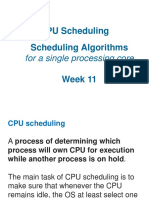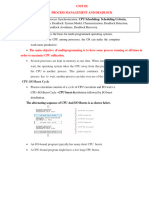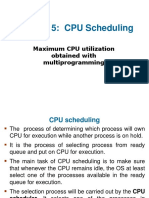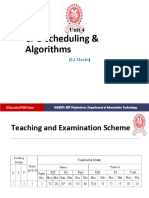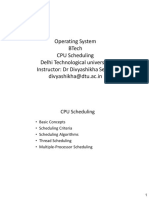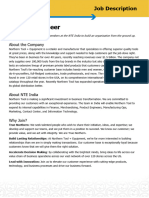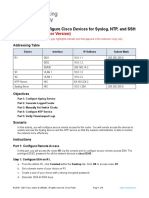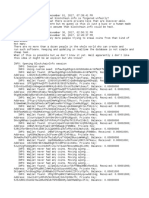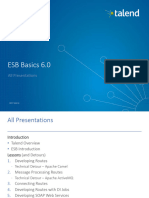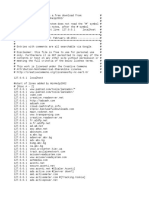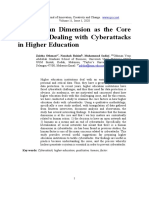0% found this document useful (0 votes)
44 views12 pagesOperating System Unit - 4
The document discusses job and processor scheduling in operating systems, outlining three levels of scheduling: long-term, medium-term, and short-term, each with distinct purposes and functions. It emphasizes the objectives of scheduling, such as maximizing throughput and ensuring fairness, and details various CPU scheduling algorithms, including FCFS and SJF, along with their advantages and disadvantages. Additionally, it explains key terminologies and factors to consider when designing scheduling algorithms.
Uploaded by
sivakamiCopyright
© © All Rights Reserved
We take content rights seriously. If you suspect this is your content, claim it here.
Available Formats
Download as DOCX, PDF, TXT or read online on Scribd
0% found this document useful (0 votes)
44 views12 pagesOperating System Unit - 4
The document discusses job and processor scheduling in operating systems, outlining three levels of scheduling: long-term, medium-term, and short-term, each with distinct purposes and functions. It emphasizes the objectives of scheduling, such as maximizing throughput and ensuring fairness, and details various CPU scheduling algorithms, including FCFS and SJF, along with their advantages and disadvantages. Additionally, it explains key terminologies and factors to consider when designing scheduling algorithms.
Uploaded by
sivakamiCopyright
© © All Rights Reserved
We take content rights seriously. If you suspect this is your content, claim it here.
Available Formats
Download as DOCX, PDF, TXT or read online on Scribd
/ 12











